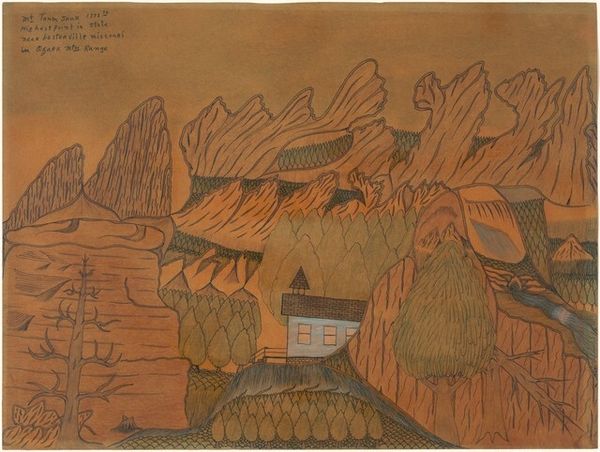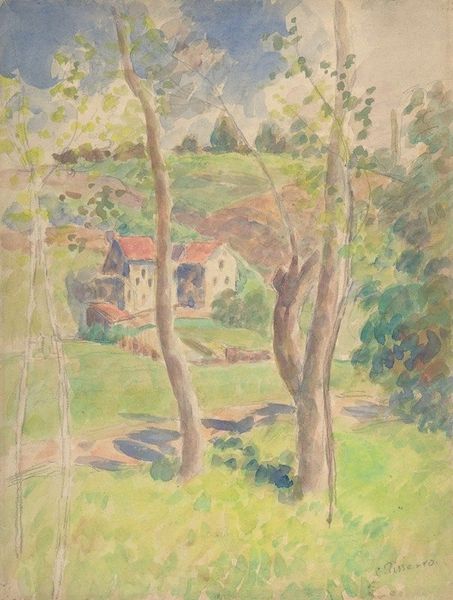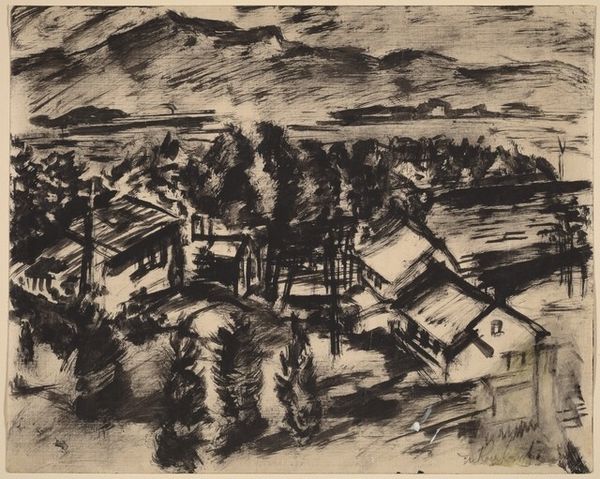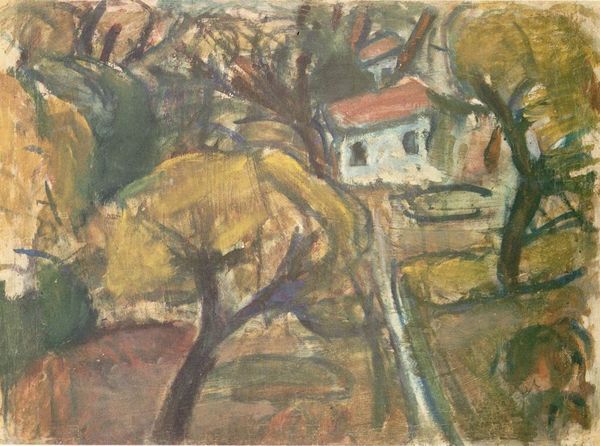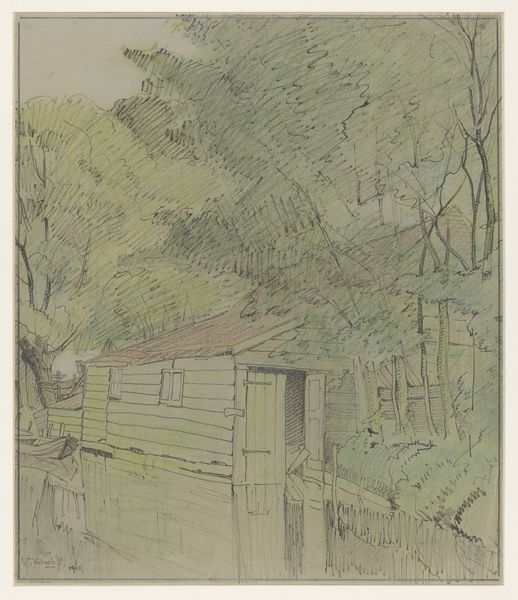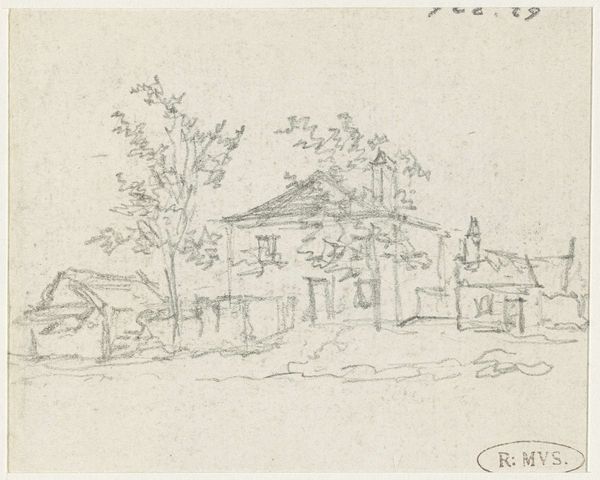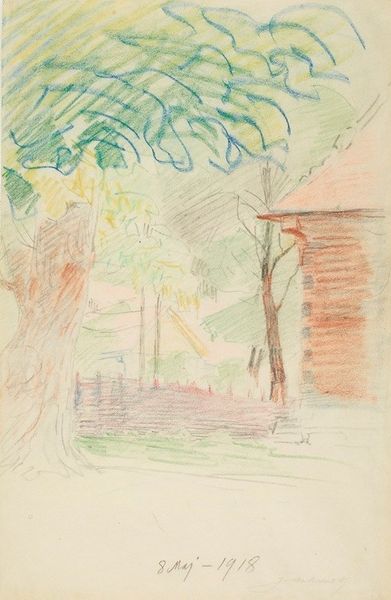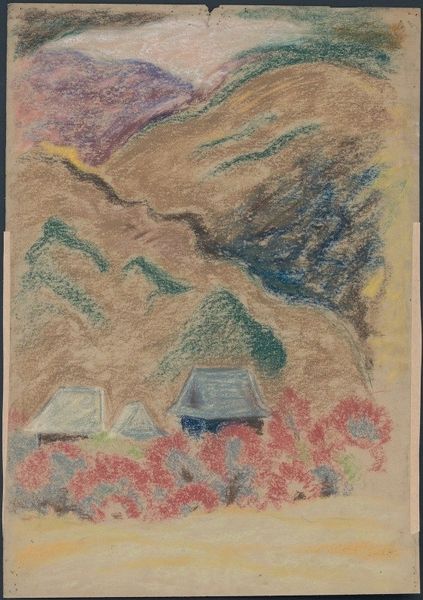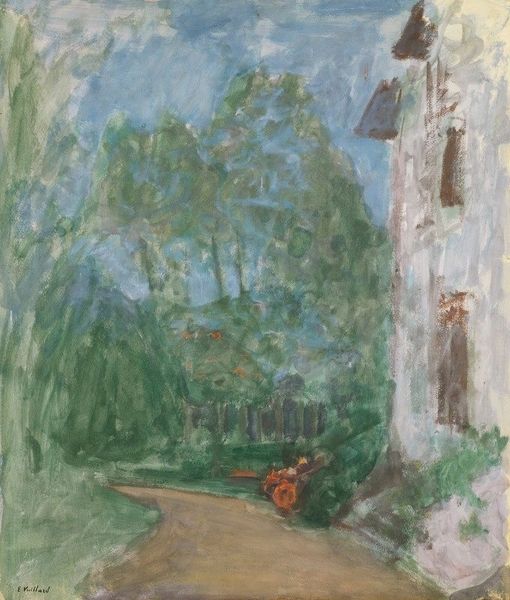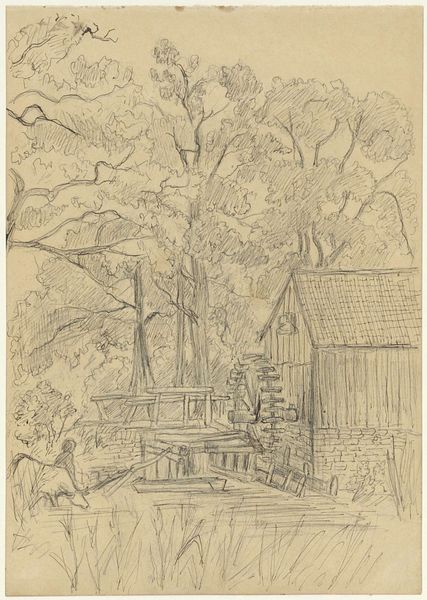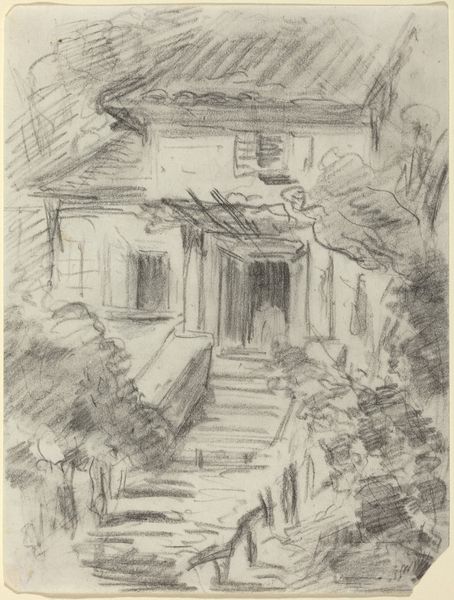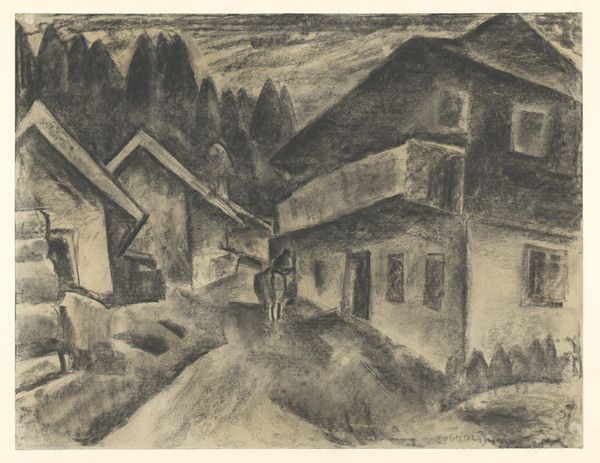
#
landscape illustration sketch
#
light pencil work
#
incomplete sketchy
#
abstract
#
coloured pencil
#
underpainting
#
painting painterly
#
watercolour bleed
#
watercolour illustration
#
mixed medium
#
watercolor
Copyright: Public Domain: Artvee
Curator: Arnold Peter Weisz-Kubínčan created "In a Village" in 1933, a mixed media piece employing watercolor and pencil on paper. Editor: It has a haunting quality, almost as if the colors are leaching away, leaving behind a fragile, dreamlike village scene. Curator: Notice the structure, the steep diagonal of the roofs mirrored somewhat in the hill rising in the background. It gives a feeling of containment. How do you see that mirrored relationship, symbolically? Editor: I'd argue the mirroring signifies humanity’s place within nature. The architecture doesn't dominate; it nestles under the looming, protective hill, symbolizing a traditional, grounded way of life. The earthy tones reinforce that connection, of course. Curator: The muted colors indeed play a critical role. There is little chromatic contrast. They flatten the image, prioritizing form and the gestural application of the media. Look at the economical pencil work describing the bare trees. It's almost a study in implied lines and texture, avoiding distinct coloration. Editor: Right, but those muted colors could also point towards specific emotions tied to place, even loss. Consider that landscape painting, from the Hudson River School to Impressionism, is often less about a place as such, but a feeling. Village life is a repeated symbol. Here it suggests, with its subdued palette, a sense of longing for simpler times, or maybe of a past that’s slipping away due to social factors such as the increase in Slovakian migration to the big cities such as Bratislava in the 1930's. Curator: A poignant point. Observe how Kubínčan uses layering to generate spatial depth; each form informs the next in planar progression with that visual arrangement creating a coherent system of pictorial meaning. Editor: The single figure walking away, perhaps back into the hills. Is he an archetype of a wanderer, leaving the familiar? Maybe Kubínčan expresses his cultural anxiety using these symbols and by rendering it with watercolor evokes certain memories. Curator: By deconstructing Kubínčan’s compositional approach alongside these historical allusions, we uncover levels of intention regarding materiality and context. Editor: It really allows us to see beyond the apparent tranquility and consider it a work reflecting human connections, and maybe a quiet kind of tension regarding Slovakian cultural changes, all communicated with watercolor and pencil.
Comments
No comments
Be the first to comment and join the conversation on the ultimate creative platform.
